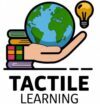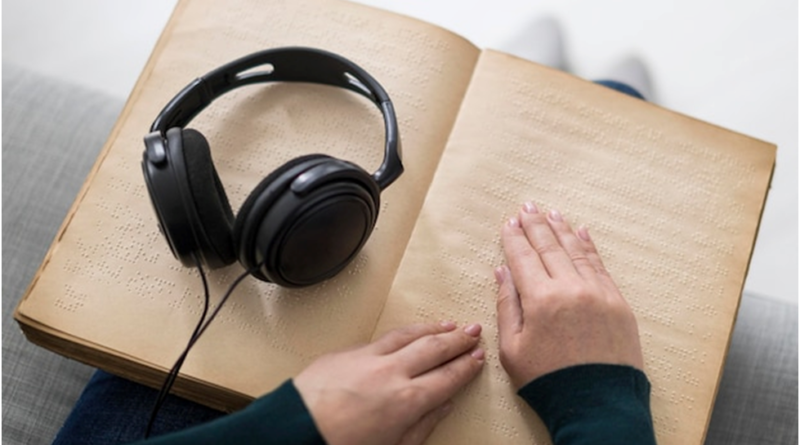Auditory learning Style:Unlocking the Power of Sound in Education
Auditory learning is one of the most powerful and unique ways that people engross and retain information ‘Sound is a key to comprehension is best example of Auditory learners. They learn best by listening. Whether its talks, lectures, or auditory cues. This article explores the traits that characterize the auditory learning style and provides practical strategies to support auditory learners in educational settings, we may use comprehensive as a powerful tool to assist auditory learners in educational settings. We may use a comprehensive and powerful tool to assist auditory learners realize their full potential.
1.Auditory learning: what is it?
For those with an auditory learning style, listening is the most real method of information processing, being able to process the information through their ears whether it be spoken language, music or back ground noise is very beneficial for auditory learners. They usually have a remarkable ability to listen. A gift for verbal communication and a strong memory for what they they have heredities contrasts with visual learners, we depend on diagrams and drawings or tactile learners, who learn best through hands-on exercises.
For auditory learners, the best environments are those that enables them to attend lectures, engage in discussions and participate in spoken conversations. Oral explanations, instructions. and conversations often help them retain information much batter then written stuff’. Among the material and tools auditory learning equipment’s role is vital for learning pupils.

2. Important Qualities of Auditory Learners
Acquaintinginstructional tactics to Demond of auditory learners requires an understanding of their characteristics. Some typical traits of auditory learners are listed below:
- Excellent verbal abilities: Reading aloud, debating and verbally expressing themselves are all skills that auditory learners frequently excel at. They are able to express their ideas and viewpoints with clarityReading aloud, debating, and verbally expressing themselves are all skills that auditory learners frequently excel at. They are able to express their ideas and viewpoints with clarity.
- Excellent recall of spoken information: They are exceptional listeners in lectures and conversations because they retain spoken words better then written knowledge.
- Taking pleasure in conversations: Oral lectures, seminars, and group discussions where they can listen and share ideas are ideal for these learners.
- Preference for audio tools: Auditory learners often favor, audiobooks, pod casts, and recorded lectures to printed notes or textbooks.

- Sensitivity to pitch and tone: They might be able to pick up on subtleties in speech because they are sensitive to changes in tone, rhythm, and emphasis.Expressivec thesecharacteristics can help teachers and students employ strategies that work for auditory learning type, which will improve engagement and retention
3. Strategies for Auditory Learners
Teachers might use specific tactics that play to the strengths of auditory learners to help them reach their greatest potential. The following are effective strategies that support the success of auditory learners:
- Verbal Instruction and Discussion
Clear, stimulating, logical verbal instruction is crucial for auditory learners, who thrive on spoken material. It is important to pay attention to tone, tempo and clarity when giving lectures and verbalexplanations. Interactive conversations that allow them to interact with classmates, ask questions and verbally digest material are beneficial to these learners. This comprehension is strengthened when they are encouraged to explain ideas aloud.Because they provide possibilities for verbal exchanges and collaborative learning, study groups and group discussions are especially beneficial for auditory learners. Auditory learners can strengthen their understanding of difficult subjects by comparing viewpoints through listening to others.
- Use of Audiobooks and Podcasts
Conventional textbooks might always be the best resource of auditory learners. Rather, using podcasts, audiobooks, lecture that have been recorded can have a big impact, Students can concentrate narrative on the narrative rhymes and flow when listening audiobooks, which is an interesting method of consuming literature that frequently appeals to them more than visual reading. Podcasts with educational content are an additional useful tool.With subjects ranging from physics and history to language acquisition and self-improvement, pod casts provide auditory learners with a wealth Podcasts with educational content are an additional useful tool. With subjects ranging from physics and history to language acquisition and self-improvement, podcasts provide auditory learners with a wealth of information that may be consumes their own leisure information that they may consume at their own leisure.

- Repetition and Mnemonics
Repetition: Reinforcing auditory learning requires recurrence. Auditory learners can improve their retention of material by employing voice recordings for review sessions, repeating important points out loud, or relistening to lectures. auditory learning requires recurrence. Auditory learners can improve their retention of material by employing voice recordings for review sessions, repeating important points out loud, or relistening to lectures. They will retain more information if you will encourage them to recites facts, dates, or language out loud.
Mnemonics: Rhymes, songs, and catchy phrases are very helpful for auditory learners. Students are able to swiftly recall complex knowledge by developing verbal shortcuts that are simple to remember. For example, a reminder such as “My very educated mother serves us chicken soup in winter” may help auditory learners remember the order of planets in our solar system.
- Methods of Active Listening
The learning potential of auditory learners can be increased by teaching them active listening techniques. Thisincludes paying close attention to the speaker, creation of mental notes, and seeking clarification as necessary. To make unquestionable they have understood the information, teachers can encourage pupils to practice summarizing what they have heard. To fully understand spoken words, active listening also entails observing non-verbal clues like quality and stress.
- Including Sound and Music
For those who study finest by hearing, music is real and effective aid. Meanwhile, contextual music aids in concentration and information processing, many auditory learners find it enjoyable when studying or working on assignments, Finding the ideal balance is vital, though, as instrumental music could be more more productive for study sessions than music with lyrics, which can occasionally be distracting. Tunesin the target language can be eccentric method to improve articulation and vocabulary when learning a language, using footages of themselves reading aloud can also be helpful for auditory learners, as it enables them to review their development.
4. Potential Problems for Auditory Learners
Thoughauditory learners excel in environments ironic with sounds, they face challenges in more visually oriented or written focused settings. For example, class rooms that communicate heavily on written text books, visual aids, or still individual work may stance difficulties for auditory learners. These students might fight to retain information from silent reading alone or may find it harder to concentrate in environments where spoken communication is in complete.Tooverwhelmed these challenges, auditory learners can growpolicies like interpretation lectures, asking for oral clarifications for written instructions or contributing in study groups where they can orally process the physical.
5. Technology Assisted Instruction for Auditory Learners
In the current and recent digital era, there are many skills available to improve the educational experience for auditory learners. For auditory learning, apps such as Audible for audiobooks, pontificate for text-to-speech change, and YouTube and Spotify for instructional podcasts are perfect. Hence, in the classroom or on the move, these resources make it simple to access verbal content whenever you need it.To further play to their fortes, voice to text requests allow auditory learners torelate their ideas or answers than typing. Auditory learners can make the most of their education and upholdattention in the subject matter by utilizing these resources.
Conclusion
The auditory learning style offers an incredible way to engage with the world through sound. Auditory learners possess strong listening skills, an ability to process verbal information, and a natural aptitude for discussion and verbal expression. By incorporating verbal instructions, audiobooks, repetition and sound in to their study habits, auditory learners can harness their strengths and excel academically, for educators, understanding the auditory style and tailoring teaching methods accordingly can ignite a deeper connection with these learners. By making sound the cornerstone of learning, we can ensure auditory learners not only succeed but also thrive in their academic journeys,Unlock the power of sound, and watch these learners flourish
FAQ
1- What does auditory technology means?
Hearing Assistive Technology System (HATS) are specialized devices that enhance listening in a variety of circumstances, including classrooms, theaters, television broadcasts, and a phone and in person discussions. Assessments are offered to determine each person’s unique amplification requirements.
2- Which four categories of auditory training exist?
A variety of Auditory skills, including as detection, discrimination, identification, and comprehension, have been the focus of face-to-face auditory training throughout history. Variety of stimuli, including syllables, words, phrases, sentences, and related speech, can be used to educate these auditory skills.
3- What kind of technology is employed in education?
Interactive whiteboards, instructional applications, online resources are examples of technology used in education that provide students with dynamic content and promote greater comprehension.
4-Which four auditory talents are there?
I. Detection: The capacity to react to the existence or non-existence of sound is known as detection.
- II. The ability to recognize the similarities and differences between two or more speech stimuli is known as discrimination.
- • III. Recognition.
• IV. Understanding.
5- What are the basic Auditory skills?
The ability to detect would be the fundamental hearing talent at the most basic level. In this context, we exhibiting awareness of a certain sound or sounds, whether they are environmental or spoken sounds.





